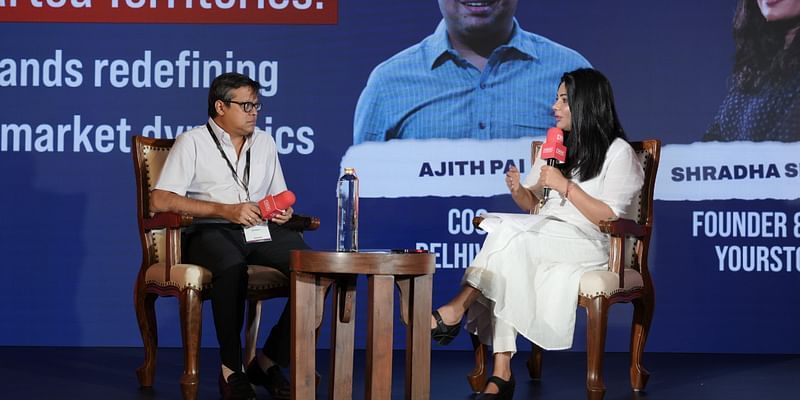Focusing on three key metrics, Flipkart SmartBuy aims to reach 35 categories by July
An overview of how Flipkart SmartBuy has fared so far, the three key metrics the team focuses on and the plan to scale from 15 categories to 35.
From engaging in cutthroat growth at all costs between 2014 and late 2015 in a bid to gain marketshare, e-commerce in India has become more mature now. Private labels have recently been touted to be the ‘Hail Mary’ for e-commerce platforms to get back on track towards profitability. Amazon India has AmazonBasics, while Flipkart SmartBuy is Flipkart’s umbrella private label, which focuses on providing high-quality products at competitive price points.
YourStory spoke to Adarsh Menon,VP and Head, Private Labels at Flipkart, to get an overview of how SmartBuy has been progressing since its launch in January this year, and how the e-commerce giant aims to expand to 35 categories by July. Here are the highlights from the conversation.

A brief recap of Flipkart SmartBuy
At the time of its launch, Flipkart SmartBuy was present in two main categories – electronics and mobile accessories. In the past four months, Flipkart has expanded into many other product categories. Talking about the thought process behind SmartBuy, Adarsh noted that they rely on extensive research and look at addressing specific requirements of customers while launching SmartBuy product categories.
The goal is to look at existing products and the customer behaviour towards them, and identify market gaps in terms of product specifications, pricing, and quality. Once identified, the SmartBuy team works with manufacturers and partners to launch new products with custom specifications, which they believe will do well.
Also, to improve the last-mile experience and minimise returns from defective products getting shipped, Flipkart ensures all that SmartBuy products undergo multiple tests at the manufacturing units, which have been certified by regulatory bodies. This is followed by stringent inspection processes until certified products are shipped to the warehouse.

Growth from January to April 2017
From starting out with two categories, Adarsh noted that Flipkart SmartBuy has grown extensively in the last four months, and now plays into the following categories:
- Mobile accessories (powerbanks, mobile cases and covers, chargers and cables)
- Personal audio (earphones, headphones, and bluetooth speakers)
- Home (bed sheets and containers)
- Small home appliances (mixer grinders, juicers, electric kettles, irons, fans, and sandwich makers)
- Personal grooming appliances (trimmers)
These above products add up to about 15 broad product categories, and Flipkart aims to launch 20 more in the coming months, to reach a total of 35 categories by July. Adarsh said,
All the categories include everyday products that people use. Our focus is on quality and affordable prices.
What metrics does Flipkart track to measure SmartBuy’s success?
A few years ago, Gross Merchandise Volume (GMV) was the most tracked metric by e-commerce players. Then, it was Net Promoter Score (NPS). So, on being asked about the different metrics that Flipkart tracks to judge how well a SmartBuy category is doing, Adarsh stated that they look at three main metrics:
- Quality metrics.
- Top line metrics.
- Bottom line metrics.
While all three metrics are important, Adarsh said that quality takes the numero uno focus, as it is what Flipkart SmartBuy aims to stand for. He further added,
Across every SmartBuy launch, quality metrics have been better than the average for the category at that stage. Another big plus point is that the presence of Flipkart SmartBuy in a category has lifted the overall quality of the category.
Talking about the other two metrics, Adarsh noted that, across most categories, Flipkart SmartBuy’s sales range from eight percent to 50 percent of sales in that category. He added,“These sales are able to add anywhere between 500 and 1,000 points of incremental profit to sellers who sell this brand for us.”
Trends
While powerbanks, chargers, and headphones are among the top selling products, Adarsh said that the sales of ceiling fans have also grown extensively since the launch in April. On being asked if the brutal Indian summer is a factor for the sudden rise in fan sales, Adarsh explained,
Buying fans is definitely a seasonal exercise. But finding branded fans is generally a big struggle across offline markets. Most people end up buying unbranded fans, because availability of good quality branded fans is low. These customer insights, along with the data that showed that the bulk of demand and sales happen in April, May, and June, led to this launch.
Putting a number to their sales, Adarsh said that Flipkart SmartBuy fans currently account for 35 percent of the total fan sales on Flipkart. He also noted that, on the whole, Flipkart SmartBuy products have seen great customer feedback. He stated,
This feedback gives us the confidence to go into more categories. The goal is to move to more high involvement categories like smart home appliances, furniture, tables, and high-end consumer electronics.
But is it a repeatable formula?
Based on their progress so far, from going from two categories to 15, Adarsh believes that Flipkart SmartBuy has cracked the formula to replicate their success across different product categories. The focus will be on leveraging the data that Flipkart has on customers’ buying habits and then introduce products that fill market gaps.
But by following this strategy, won’t Flipkart start competing with other sellers in its own marketplace? Adarsh believes that while this will probably affect sub-par sellers the most, it is unlikely to trouble other reliable, highly rated sellers. He said,
At the end of the day, every time a good brand enters a category, the category as a whole grows. This is a universal truth across all retailers. Also, the presence of a lot of good brands ensures that people gain confidence in the quality of the category, which, in turn, boosts sales overall.
Adarsh stated that Flipkart aims to communicate more about Flipkart SmartBuy with customers during their upcoming Big10 sale, happening from May 14th to 18th, and test the waters with different Flipkart SmartBuy products. He further said that this upcoming sale is at par with their Big Billion Day sale, which was Flipkart’s first big five-day sale.
Website- Flipkart SmartBuy
Related read- Can private labels power e-commerce to profitability?








![[App Fridays] J&K teen builds Dodo Drop, a Made-in-India alternative to SHAREit](https://images.yourstory.com/cs/2/70651a302d6d11e9aa979329348d4c3e/appfriday800x400-1596703848981.png)


